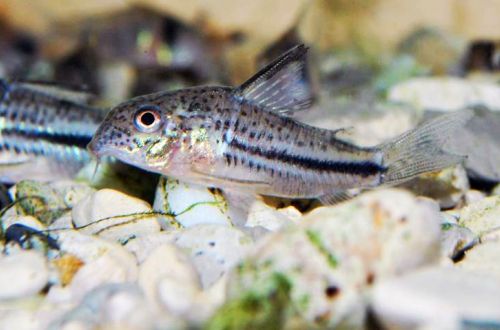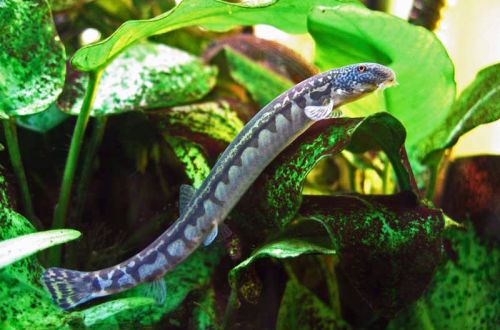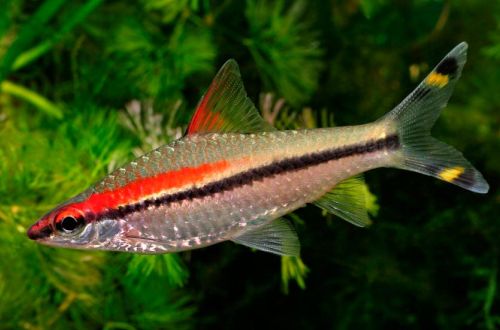
Bond Corridor
Corydoras Bonda, scientific name Corydoras bondi, belongs to the family Callichthyidae (Shelled or Callichthy catfishes). Catfish is named after its discoverer, Dr. Franklin Bond, who first discovered and described this species.

The fish is native to South America. Inhabits the basin of the Curantine River, which is the natural border between Guyana and Suriname in the northeast of the continent.
Contents
Description
Adults reach a length of 4–5 cm. The fish has a yellowish color. The body pattern consists of many black dots on the back and a horizontal stripe on the sides, framed by silvery lines stretching from head to tail. The dorsal and caudal fins also contain a spotted pattern. The rest of the fins are translucent.
Brief information:
- The volume of the aquarium – from 70 liters.
- Temperature – 20-26°C
- Value pH — 5.5–7.5
- Water hardness – soft (2-12 dGH)
- Substrate type – sand or gravel
- Lighting – moderate or bright
- Brackish water – no
- Water movement – light or moderate
- The size of the fish is 4–5 cm.
- Food – any sinking food
- Temperament – peaceful
- Keeping in a group of 4-6 fish
Maintenance and care
It belongs to undemanding and easy-to-keep fish. Bond’s corridor perfectly adapts to a wide range of hydrochemical values. Able to live both in acidic soft and slightly alkaline water of medium hardness. The choice of design also does not matter much. The only condition is soft ground and the presence of several shelters.
Like any other fish, the catfish needs a clean aquarium. A cleaning system, even the most expensive one, is not a panacea for maintaining a healthy ecosystem. It is imperative to regularly clean the soil from organic waste (food leftovers, excrement), clean the decorative elements from plaque and replace part of the water with fresh water weekly.
Food. They belong to the omnivorous species. Will accept most dry foods (flakes, pellets) as well as live and frozen brine shrimp, daphnia, bloodworms and similar foods of a suitable size.
behavior and compatibility. Peaceful sociable species, gets along well with similar fish of comparable size. They can be alone or in pairs, but they will feel most comfortable in the company of relatives. If possible, it is worth buying a group of 4-6 fish.





